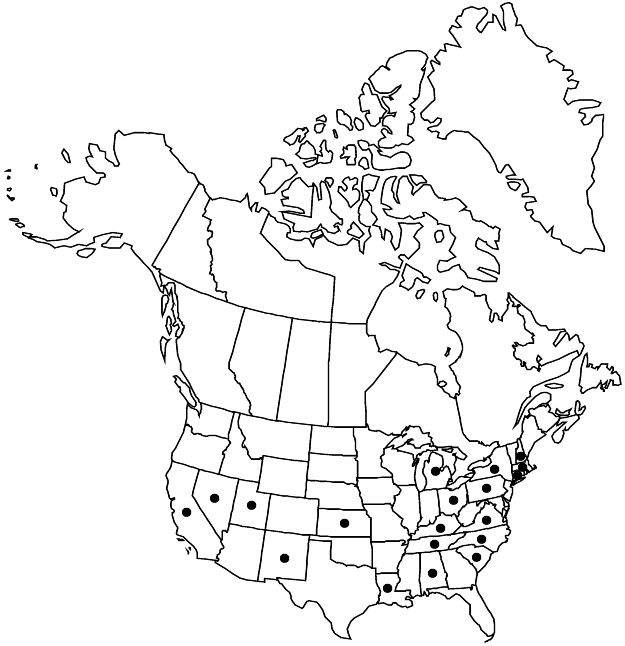Difference between revisions of "Cucurbita pepo"
Sp. Pl. 2: 1010. 1753.
RevisionBot (talk | contribs) m (Bot: Adding category Revision Pending) |
imported>Volume Importer |
||
| Line 81: | Line 81: | ||
|publication year=1753 | |publication year=1753 | ||
|special status=Introduced | |special status=Introduced | ||
| − | |source xml=https:// | + | |source xml=https://bitbucket.org/aafc-mbb/fna-data-curation/src/2e0870ddd59836b60bcf96646a41e87ea5a5943a/coarse_grained_fna_xml/V6/V6_84.xml |
|genus=Cucurbita | |genus=Cucurbita | ||
|species=Cucurbita pepo | |species=Cucurbita pepo | ||
}}<!-- | }}<!-- | ||
| − | --> | + | -->[[Category:Treatment]][[Category:Cucurbita]] |
| − | |||
| − | [[Category:Treatment]] | ||
| − | [[Category:Cucurbita | ||
| − | |||
Revision as of 22:23, 5 November 2020
Distribution

Ala., Calif., Conn., Kans., Ky., La., Mass., Mich., N.C., N.H., N.Mex., N.Y., Nev., Ohio, Pa., S.C., Tenn., Utah, Va., Mexico, Central America (Guatemala), introduced also nearly worldwide.
Discussion
Subspecies 2 (1 in the flora).
Archaeological and molecular-genetic research, especially data from mitochondrial DNA and RAPD studies (O. I Sanjur et al. 2002; D. S. Decker et al. 2002b) and earlier isozymic and chloroplast DNA studies (for example, Decker et al. 1993), indicates that Cucurbita pepo in the broad sense includes two lineages: (1) C. pepo in the strict sense, a Mexican lineage of domesticates that differs from plants generally identified previously as C. pepo subsp. ovifera (here as C. melopepo) by a derived molecular feature (a difference in three adjacent base pairs) that occurs also in the C. moschata and C. sororia L. H. Bailey and C. argyrosperma Huber groups, and was shared presumably by the wild ancestor of C. pepo, which is unknown and possibly extinct; and (2) C. melopepo, a lineage of northeastern Mexico and the eastern Unites States in which the three wild varieties (var. fraterna, var. ozarkana, var. texana) and the domesticated variety (var. ovifera) share identical mitochondrial DNA sequences (Sanjur et al.) as well as similarities in isozymes and other kinds of DNA. Domesticates of C. pepo and C. melopepo are independently derived lineages.
Cucurbita pepo subsp. gumala Teppner comprises domesticates from Guatemala and adjacent southern Mexico and apparently is native there (H. Teppner 2000, 2004). The plants have depressed-globose pepos 13–20 cm in diameter with extremely thick rind, ripening orange-yellow, and with orange flesh. Teppner observed that the fruits of subsp. gumala are similar to the ancient ones from Guilá Naquitz cave in Oaxaca.
Cultivars of Cucurbita pepo with edible pepos have been divided into eight groups (H. S. Paris 1986, 1989; see also E. F. Castetter 1925), based mainly on pepo morphology. Pepos of cultivated forms differ from those of their wild ancestors in their larger size and more variable shape, less durable and more varicolored rinds, and less fibrous, nonbitter flesh.
Plants of Cucurbita pepo are likely to be found as non-persistent waifs all over the world, wherever they can be grown in temperate and upland tropical areas.